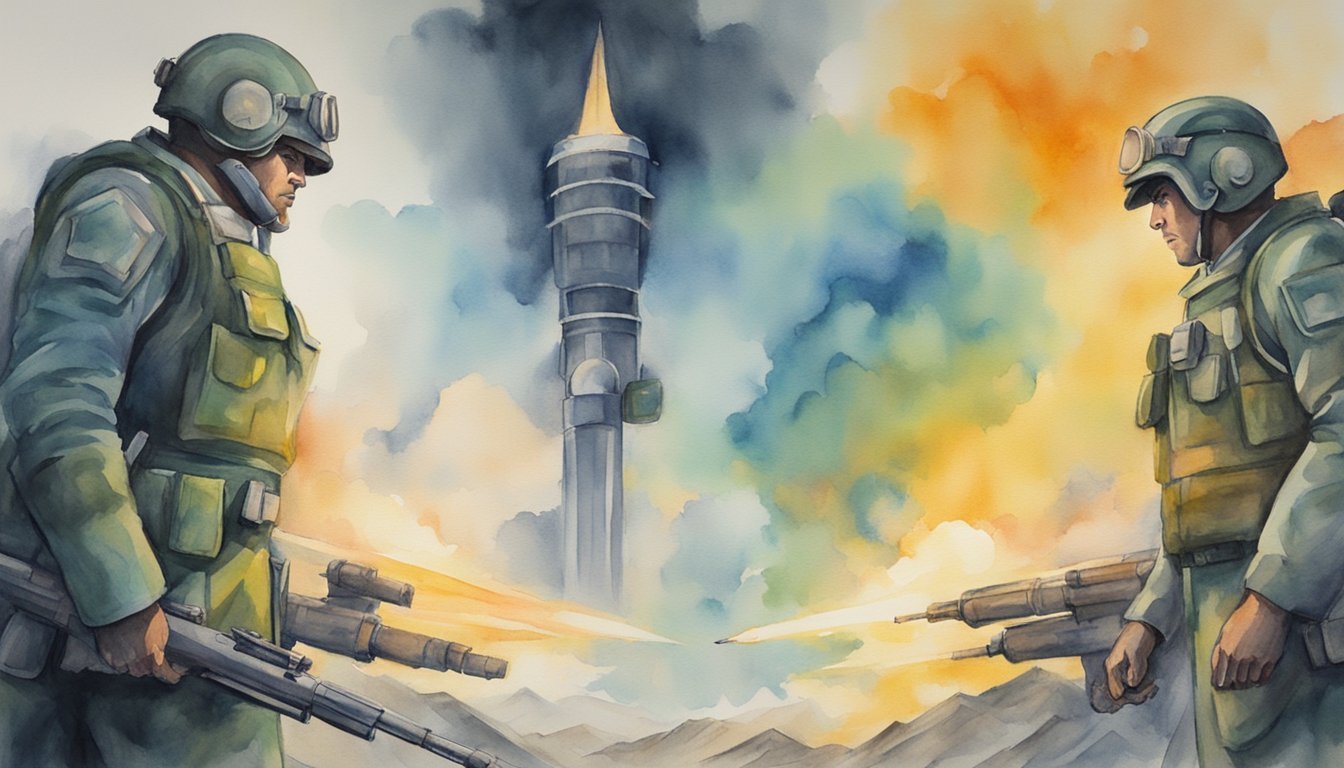Origins and Ideologies
The Cold War was rooted in the ideological battle between capitalism and communism, arising after the extreme devastation caused by World War II. This global struggle saw the United States and the Soviet Union emerging as superpowers and fostering distinct military alliances—NATO and the Warsaw Pact—which embodied their ideological divide.
Post-World War II Tensions
Following the end of World War II, the United States and the Soviet Union emerged from the war as dominant global powers but with fundamentally opposing ideologies. The Potsdam Conference set the stage for geopolitical friction, with both nations seeking to extend their influence over war-torn Europe. The Marshall Plan, aimed at rebuilding Western European economies, was perceived by the Soviets as an attempt by the US to propagate capitalism, thereby intensifying mutual suspicion.
Formation of Military Alliances
In response to the apparent threat of Soviet expansion, Western European nations, along with the United States and Canada, formed the North Atlantic Treaty Organization (NATO) in 1949. This collective defense arrangement was countered by the Soviets with the establishment of the Warsaw Pact in 1955, which solidified the Eastern bloc of communist countries as a unified military front.
Divide Between East and West
The ideological rift between East and West manifested physically with the construction of the Iron Curtain and the Berlin Blockade, further separating East Germany and West Germany. Truman’s policies reflected a firm stance against the spread of communism in Eastern Europe, reflecting the pervasive fear that communist ideology might sweep through the democracies of Western Europe. This divide cemented the Cold War’s status as not merely a conflict of power, but as a fundamental clash of ideologies that would shape global relations for decades.
Learn about NATO’s formation during the cultural milieu of the Cold War, or explore the ideological underpinnings behind the Iron Curtain’s creation in divided Germany.
Major Conflicts and Events

The Cold War was punctuated by several pivotal events and conflicts that not only showcased the intense rivalry between the superpowers but also had global ramifications. This section explores these significant episodes.
Strategic and Ideological Clashes
The Cold War was fundamentally rooted in the ideological battle between the capitalist West, led by the United States, and the communist East, headed by the Soviet Union. The conflict was never formally declared, but it played out in various arenas, including politics, economic aid, and the spread of propaganda.
The Nuclear Threat and Arms Race
One of the most chilling aspects of the Cold War was the nuclear arms race. The United States and the Soviet Union amassed vast arsenals of nuclear weapons, with the ever-present threat of nuclear war hanging over the world. Key moments included the Cuban Missile Crisis, when the two superpowers teetered on the brink of nuclear conflict.
Influence Wars and Proxy Battles
The global nature of the Cold War meant that proxy wars were common, with the Korean War and the Vietnam War being two of the most significant. These conflicts were ostensibly internal or regional, but each was heavily influenced by the competing ideologies and support from the U.S. and the Soviet Union.
End of the Cold War
The fall of the Berlin Wall and the subsequent events symbolized the decline of the Cold War. A series of reforms introduced by Soviet leader Mikhail Gorbachev, including ‘glasnost’ (openness) and ‘perestroika’ (restructuring), played a vital role in the eventual collapse of the Soviet Union.

